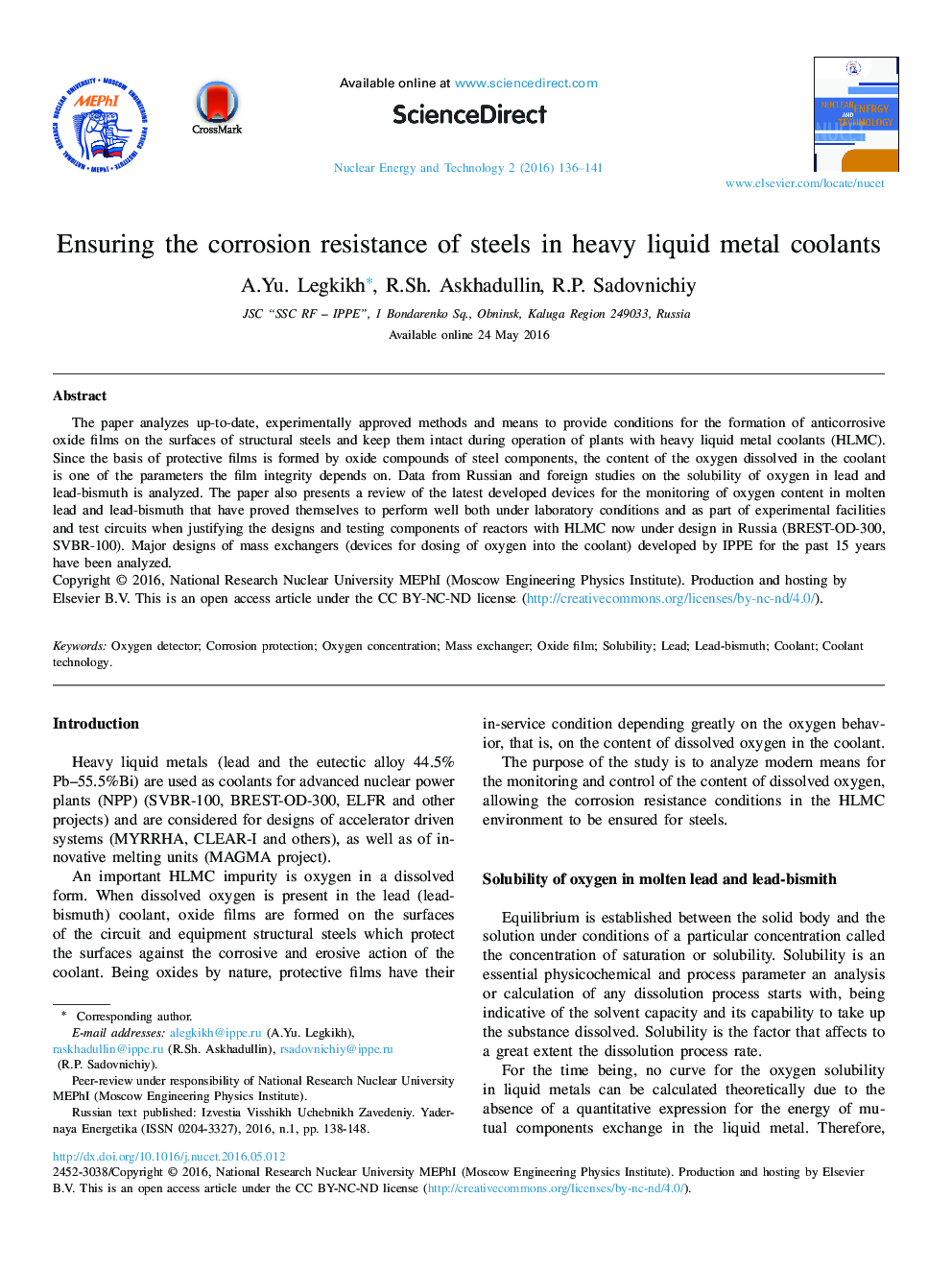| Article ID | Journal | Published Year | Pages | File Type |
|---|---|---|---|---|
| 366547 | Nuclear Energy and Technology | 2016 | 6 Pages |
The paper analyzes up-to-date, experimentally approved methods and means to provide conditions for the formation of anticorrosive oxide films on the surfaces of structural steels and keep them intact during operation of plants with heavy liquid metal coolants (HLMC). Since the basis of protective films is formed by oxide compounds of steel components, the content of the oxygen dissolved in the coolant is one of the parameters the film integrity depends on. Data from Russian and foreign studies on the solubility of oxygen in lead and lead-bismuth is analyzed. The paper also presents a review of the latest developed devices for the monitoring of oxygen content in molten lead and lead-bismuth that have proved themselves to perform well both under laboratory conditions and as part of experimental facilities and test circuits when justifying the designs and testing components of reactors with HLMC now under design in Russia (BREST-OD-300, SVBR-100). Major designs of mass exchangers (devices for dosing of oxygen into the coolant) developed by IPPE for the past 15 years have been analyzed.
